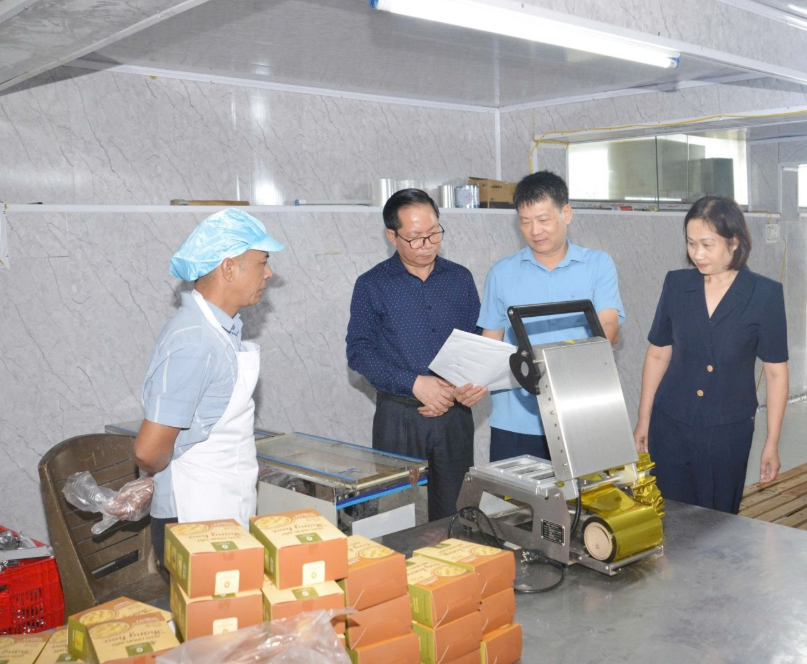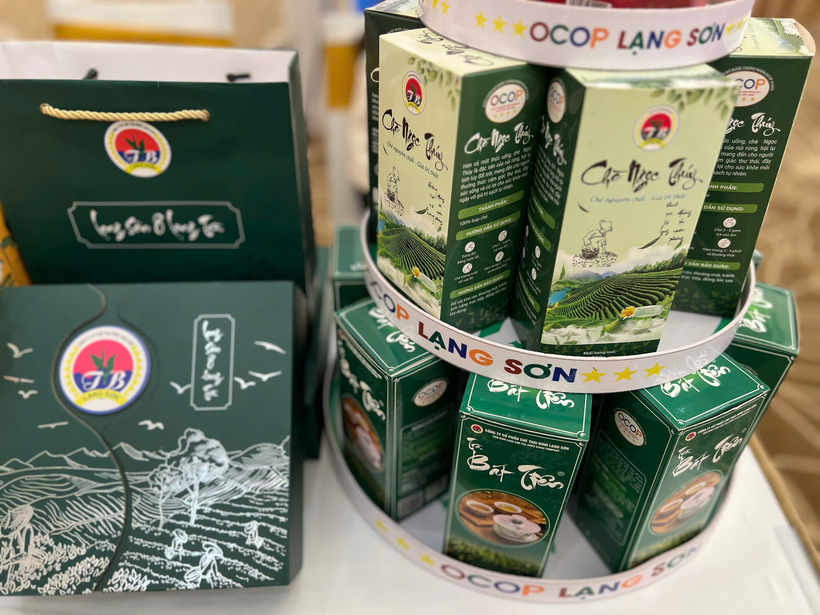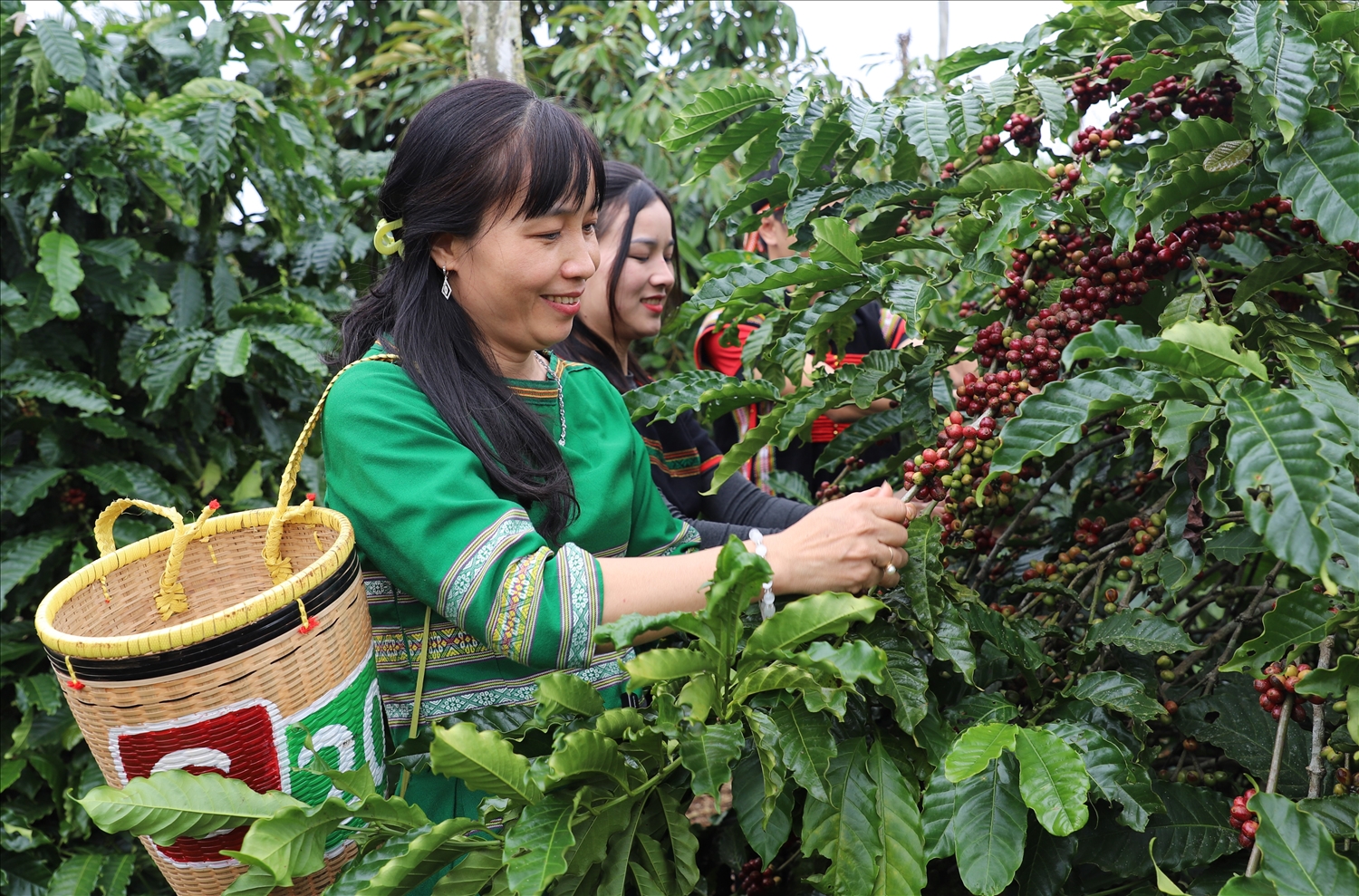
Son La’s industry promotion: A lever for rural industrial product development
19:05 | 23/03/2025 14:25 | 21/07/2025Industry
E-commerce: A new bridge for highland produce
In the context of globalization and the Fourth Industrial Revolution, e-commerce has become an inevitable trend in economic development. Beyond serving as a tool for large enterprises to expand markets, e-commerce also opens the door for small-scale goods and indigenous specialties from remote regions to reach consumers both at home and abroad.
From Shan Tuyet tea in Dien Bien and macadamia nuts in Son La to wind-dried persimmons in Lang Son, Muong Lat honey, and handicrafts such as brocade weaving and bamboo products, each carries cultural value and reflects the heritage of ethnic minority communities. To transform this value into competitive advantage, e-commerce is proving to be the “golden key.”
Yet the door is not easily opened. To enter the digital marketplace, small traders and household businesses in the highlands must overcome significant challenges. That is why trade promotion today goes beyond traditional fairs and supply-demand connection events, requiring the support of technology and digital transformation.
At the conference on promoting technological solutions and e-commerce development in Lang Son 2025, Mr. Nguyen An Son, an expert at the Digital Transformation Division of the Vietnam E-commerce and Digital Economy Agency under the Ministry of Industry and Trade, highlighted three major challenges facing small traders and household businesses, while also outlining pathways toward sustainable growth.
Three bottlenecks holding back growth
According to Son, the first challenge lies in limited digital awareness and skills. For many small traders in the mountains, setting up an online store or using digital tools to sell remains unfamiliar. Many lack basic skills such as taking product photos, writing appealing descriptions, managing orders, or providing online customer service. Without these foundations, competing with professional urban sellers becomes extremely difficult.

The second challenge is reliance on external supply chains, which leaves traders with little control over their businesses. Many households simply resell goods from major suppliers, with little connection to local production. As a result, prices are unstable, profit margins are thin, and building a unique brand becomes difficult. Meanwhile, the true potential of indigenous products remains untapped, preventing local advantages from being converted into sustainable economic value.
The final challenge, Son noted, is the imbalance between major cities and rural provinces. In Hanoi and Ho Chi Minh City, consumers are more aware and accustomed to online shopping, while in many provinces, the habit has not fully taken hold. This gap widens the divide in e-commerce development. Local traders, lacking both skills and market size, risk being left behind.
“For e-commerce to grow sustainably, it must extend beyond cities and reach rural and mountainous areas, which are home to millions of small traders and tens of thousands of local products waiting to take off,” Son emphasized.
Digital solutions for unique local produce
While challenges stem from limited awareness and supply constraints, solutions can come from digital platforms. Mr. Nguyen Lam Thanh, TikTok’s representative in Vietnam, offered a practical perspective: bringing highland farm produce to consumers nationwide has never been easy.

Highland products are often produced in small volumes, lacking industrial-scale output, which makes building large distribution systems difficult. Coupled with this, high transport costs from remote areas to urban centers drive up product prices, reducing competitiveness.
To address this, TikTok and TikTok Shop have rolled out practical initiatives. They provide digital skills training, including proper packaging, labeling, and storage techniques; along with guidance on livestreaming and personal branding to build customer trust. This helps local traders adapt to the online environment.
TikTok has also partnered with logistics providers to develop specialized transport routes, allowing fresh produce such as fruits and vegetables to be delivered faster and in better condition.
Notably, the company has proposed that the Government establish transport subsidies dedicated to highland produce. Under this model, local authorities would help cover part of the cost of moving goods from villages to urban collection points, with businesses and platforms handling the rest. This approach not only eases financial pressure on farmers, but also creates a more flexible and efficient supply chain.
“I hope that in the near future, we will have a dedicated transport program for remote-area produce. Then, local goods will not only appear in village markets but also confidently enter supermarkets, e-commerce platforms, and even international markets,” Thanh said.
From experts’ analysis, it is clear that trade promotion today requires a multi-pronged approach. Fairs, exhibitions, and supply-demand events remain important for showcasing products, but without digital tools and modern logistics infrastructure, market access will remain constrained.
In recent years, the Ministry of Industry and Trade has launched a series of initiatives: training programs in e-commerce skills for small traders, integrating OCOP (One Commune One Product) products into the national e-commerce platform, and developing regional product databases. These efforts are creating strong momentum for ethnic minority communities to embrace new business models.
Meanwhile, the participation of technology platforms such as TikTok, Shopee, Lazada, and Viettel Post has further expanded opportunities. In practice, just one successful livestream can sell thousands of farm produce orders within hours. This not only boosts income but also affirms the value of highland specialties.

In the broader digital economy, e-commerce is more than a sales channel. It is a bridge connecting culture, livelihoods, and aspirations for change among ethnic minority communities. To ensure that bridge is sustainable, coordinated efforts are essential: supportive policies from the government, investment in technology and logistics from platforms, and proactive learning of digital skills from local traders.
When these three links come together, highland specialties, from Chi Lang custard apples and Tua Chua Shan Tuyet tea to Northwest honey, will no longer be confined to village markets. They will find their place in supermarkets, on national e-commerce platforms, and gradually expand to global markets.
This is the path to sustainable trade promotion, a path that transforms highland produce from local delicacies into national pride, and turns the aspirations for change among ethnic minority communities into reality, ensuring no one is left behind in the digital economy.

19:05 | 23/03/2025 14:25 | 21/07/2025Industry

19:05 | 23/03/2025 20:00 | 14/06/2025Society

19:05 | 23/03/2025 09:34 | 17/04/2025Tourism

19:05 | 23/03/2025 14:11 | 08/01/2026Industry

19:05 | 23/03/2025 14:08 | 08/01/2026Trade

19:05 | 23/03/2025 14:07 | 08/01/2026Trade

19:05 | 23/03/2025 14:06 | 08/01/2026Trade

19:05 | 23/03/2025 14:03 | 08/01/2026Industry